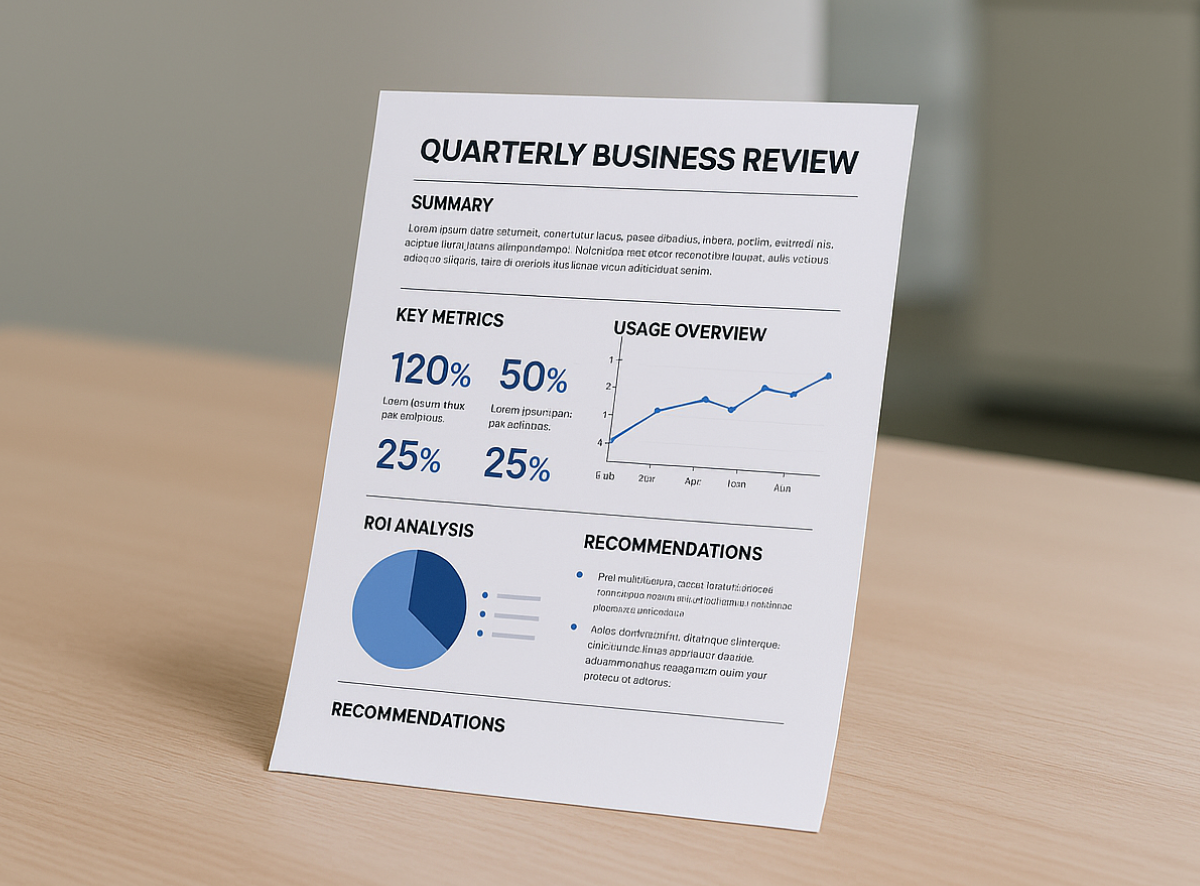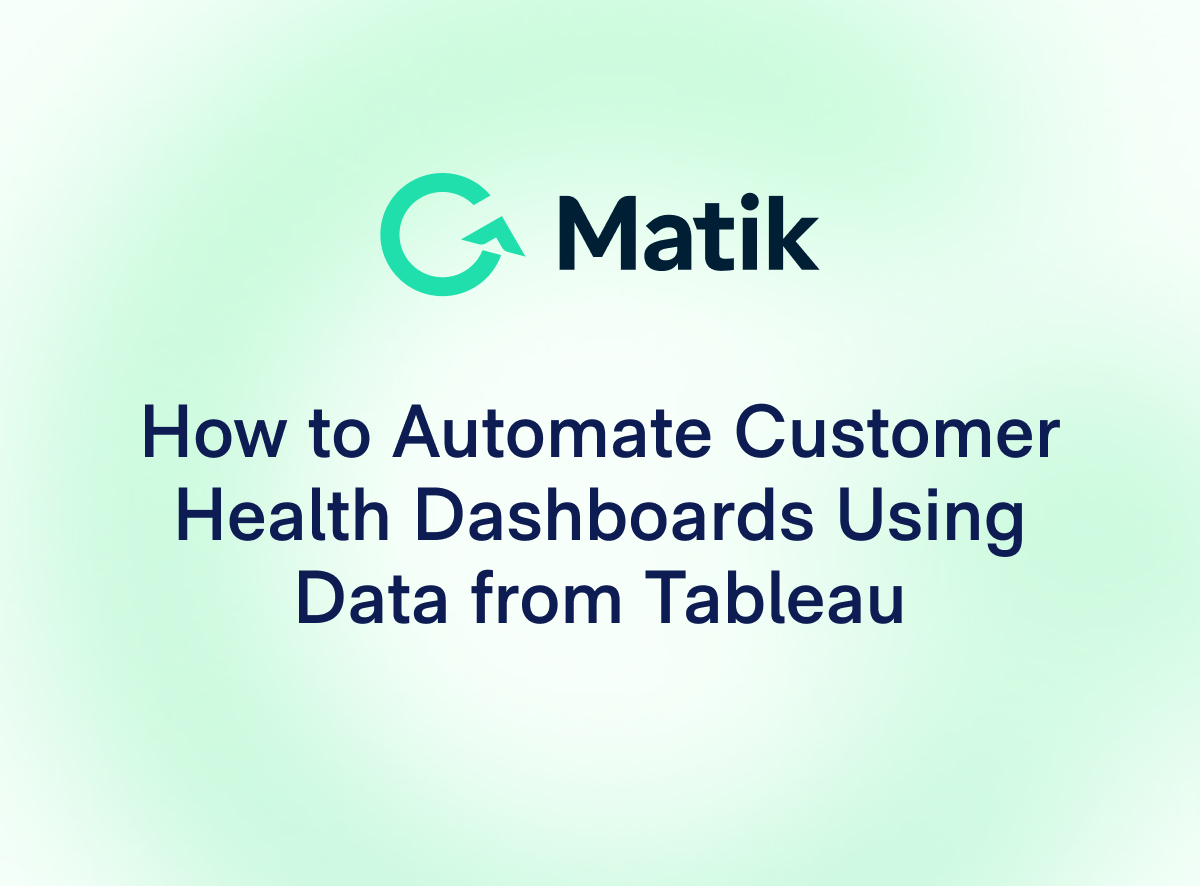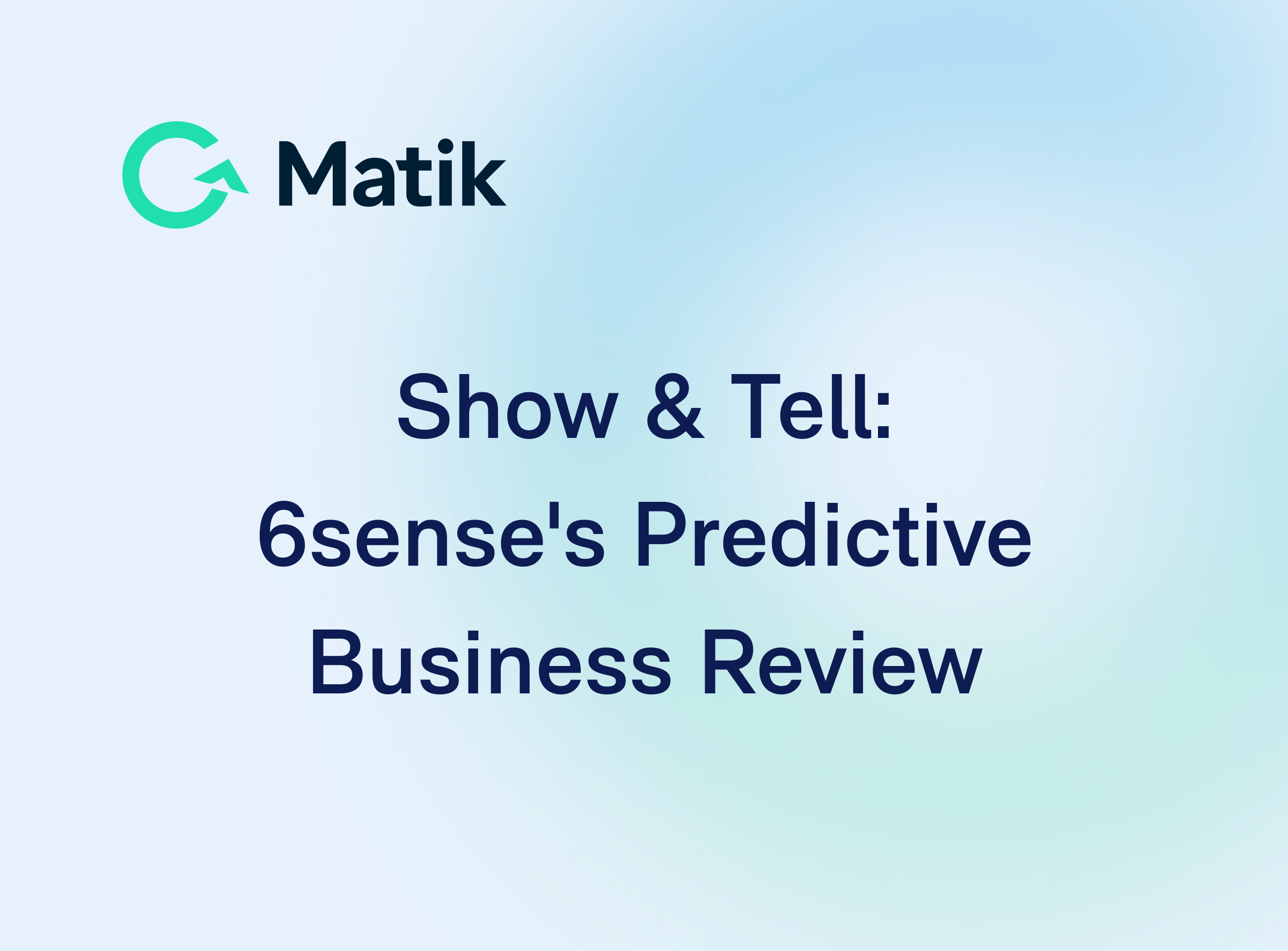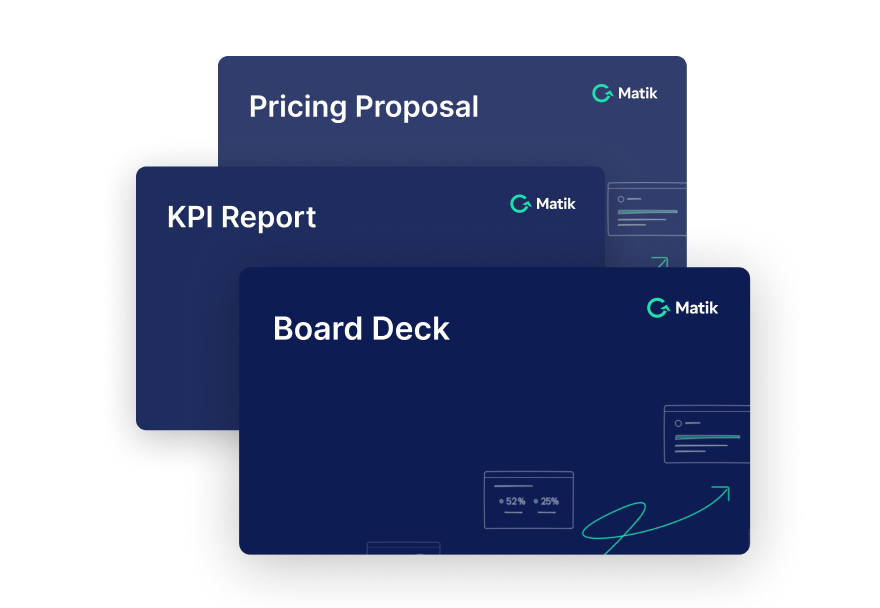Join Our Newsletter
A QBR one-pager is a powerful tool for customer success teams to provide quick, data-driven updates to clients. Unlike a full QBR presentation, which dives into comprehensive details, the one-pager distills the most important insights into a concise, easy-to-digest format. It offers high-level updates tailored to the customer's goals and objectives.
QBR One-Pager Best Practices
The key to an effective one-pager lies in thoughtful design and clear hierarchy, ensuring that the most relevant data—whether it's ROI, usage metrics, or strategic recommendations—stands out and delivers immediate value.
Keep it concise
Keep the information high-level and focused when creating a QBR one-pager. While it's important to highlight key insights, avoid overloading the document with too many details. Consider who the one-pager is for and concentrate on what matters most to them. Prioritize the most impactful metrics, ensuring that the most important information is immediately visible and easy to grasp.
Tailor to your customer
Concentrate on the key takeaways from your QBR presentation, ensuring the content is tailored to your customer’s unique goals and objectives. A well-crafted QBR one-pager should feature only the most relevant data for the customer, providing insights that directly address their needs and priorities. This approach ensures the one-pager remains focused and impactful, delivering the essential information that drives meaningful discussions.
Focus on data
Focus on presenting the data that aligns directly with what your customer values most. This means highlighting the metrics that matter to their business goals and priorities. For example, you could feature benchmarking data to show how they compare to industry standards, offer ROI insights to emphasize the return on their investment, or showcase usage statistics to demonstrate engagement with your product or service. You may also provide actionable recommendations for improving adoption or optimizing their experience. By selecting and organizing the data that speaks to their specific objectives, you create a more impactful and personalized resource that drives more meaningful conversations and reinforces the value of your partnership.
Whether you’re looking to streamline your QBR process or enhance customer communication, mastering the art of the one-pager is a powerful step forward. Click here to access the QBR one-pager creator for free.
---
See Matik in Action—Request a Demo















